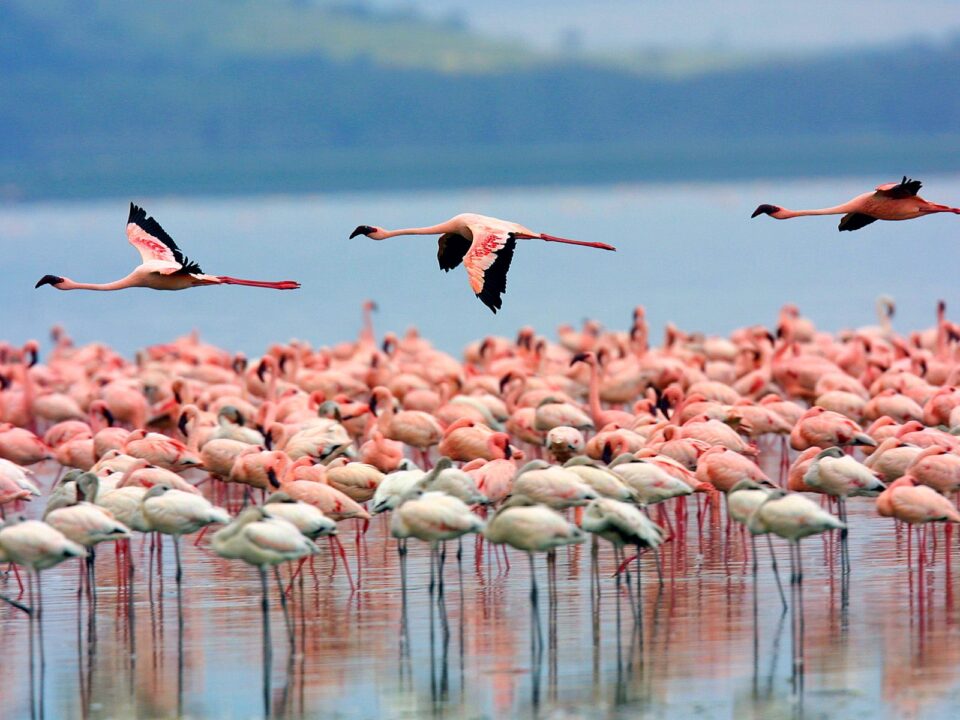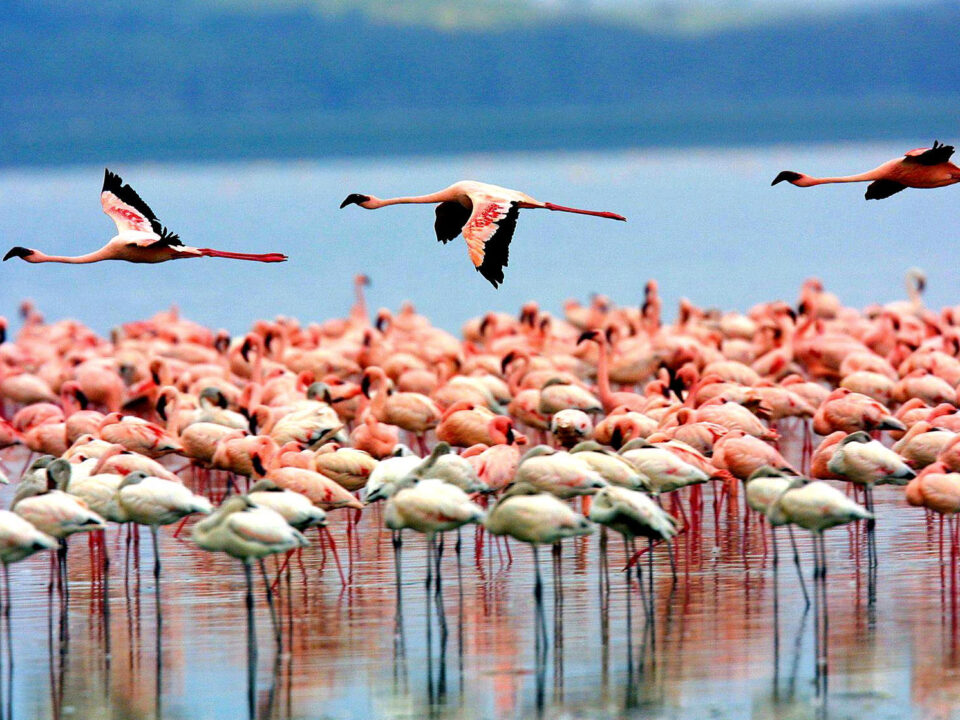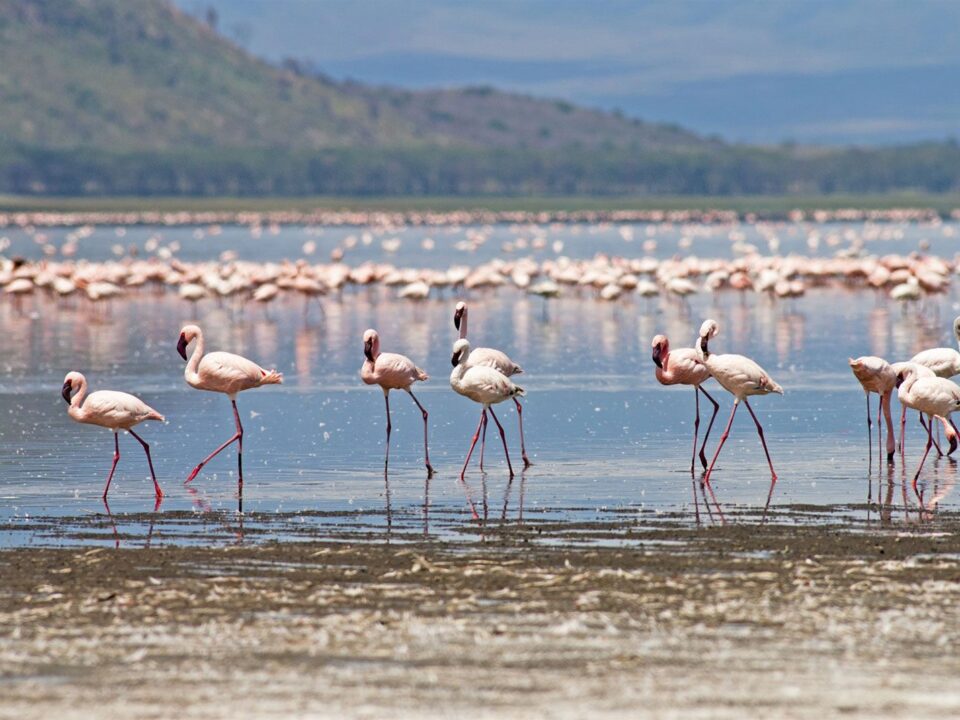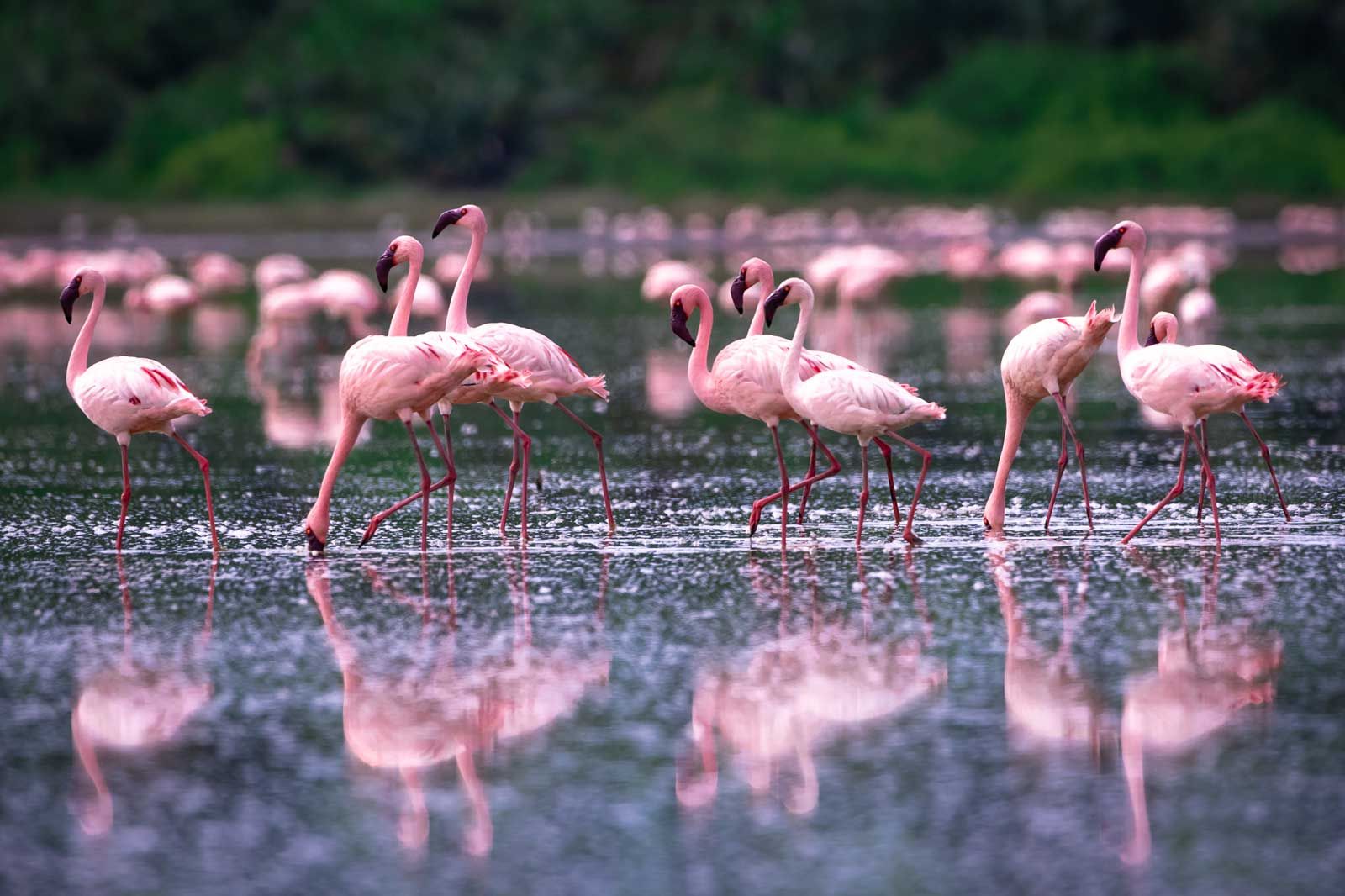
Lake Bagusa Flamingos and Salt Mining Tours
October 3, 2023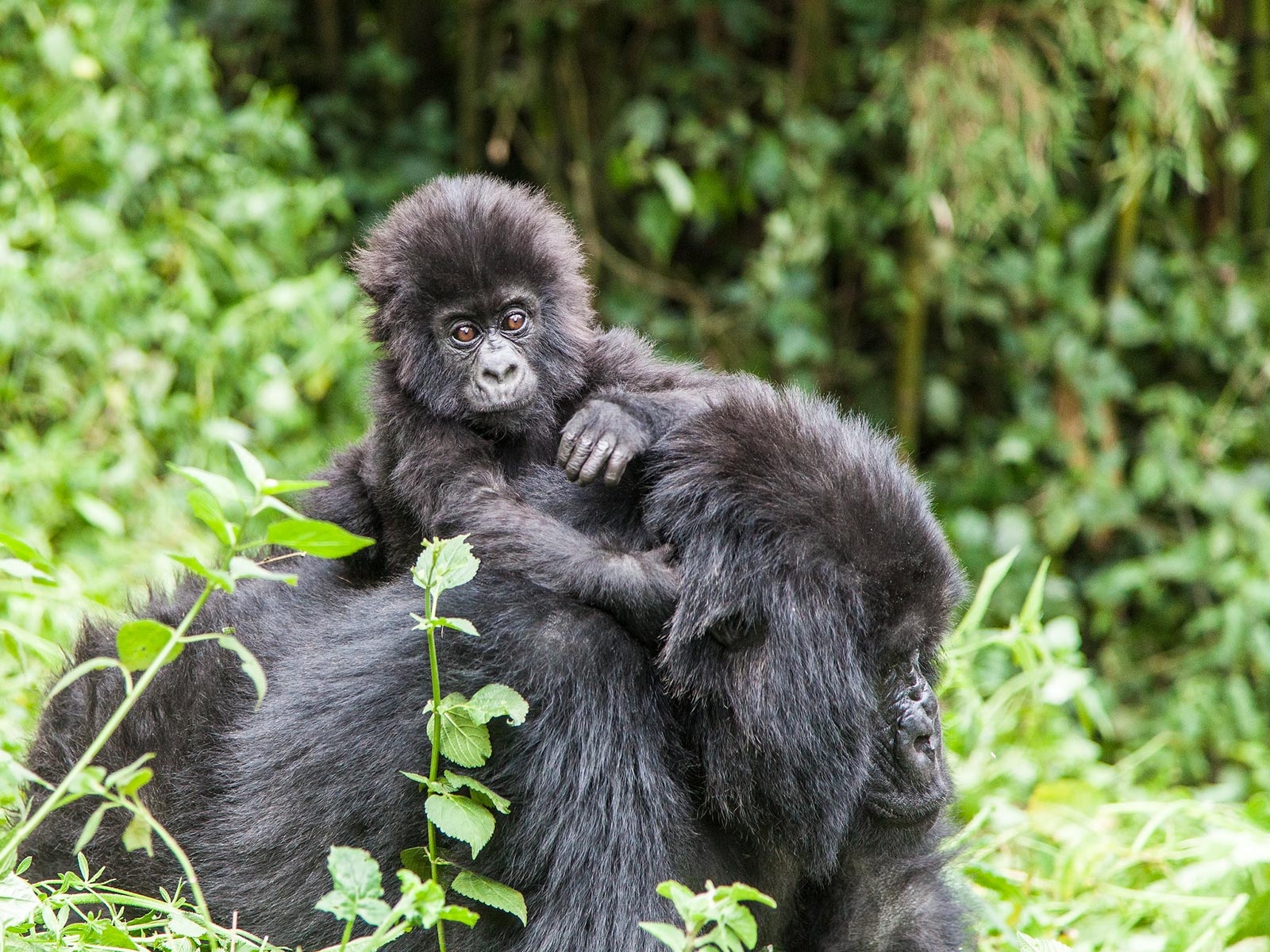
Rwanda Gorilla Safari Tours
October 3, 2023Lake Katwe Flamingos and Salt Mining Tours – A Unique Exploration in Queen Elizabeth National Park, Uganda
Prepare to embark on an extraordinary journey to the heart of Queen Elizabeth National Park, where the enigmatic Lake Katwe awaits your discovery. This captivating lake, nestled within the embrace of the Western Rift Valley, lies to the southeast of the majestic Rwenzori massif and on the western shores of the renowned Kazinga Channel. Lake Katwe, a geological wonder and a testament to nature’s artistry, is a place where flamingos grace the vibrant waters, and ancient salt mining traditions continue to thrive.
A Geological Marvel Unveiled
Lake Katwe stretches over an area of approximately 8 square miles, creating a picturesque and vast expanse of natural beauty within Queen Elizabeth National Park. This unique waterbody is situated just 800 yards from the neighboring Lake Edward, creating an ecosystem that teems with life, both above and below the water’s surface.
The region surrounding Lake Katwe is characterized by a striking landscape, with vast sheets of mosquitoes gracing its edges. While this area can be unforgivingly hot and remarkably dry, it stands in stark contrast to the lush rains that bless the nearby Rwenzori Mountains and Ankole region. Here, the landscape is adorned with hundreds of Euphorbia trees, adding to the area’s unique charm.
As you explore this enchanting landscape, you’ll notice a gradual rise of the land, leading to the rim of Lake Katwe’s vast cauldron-like depression. From this vantage point, you’ll gain a breathtaking perspective, as the lake lies approximately 95 feet below the surface of Lake Edward. The lake’s waters, at times, take on a reddish hue when viewed from a distance, adding to its distinctive allure.
Lake Katwe’s depression is an amalgamation of three craters, characterized by a relatively constant level of shallow waters that barely fluctuates. This natural wonder is particularly intriguing considering its depth of about 4 feet at its deepest point.
Nature’s Extreme Conditions
Few places in Uganda can rival the higher temperatures experienced at the bottom of Lake Katwe’s crater during the dry season. The lake’s extreme salt concentration renders it inhospitable for most forms of animal and plant life. This phenomenon is a result of Lake Katwe’s unique geography and lack of outlets, causing intense evaporation during the dry seasons, which, in turn, increases the salt concentration to astonishing levels.
A Hidden Treasure Trove of Salts
The economic importance of Lake Katwe lies in its salt content, a valuable resource for the region. The lake’s waters contain substantial quantities of Sodium Chloride, Sodium Carbonate, and Sodium Sulphate. Additionally, small amounts of potassium Sulphate, potassium chloride, and carbonate contribute to the lake’s complex chemical composition. The salinity of Lake Katwe registers at approximately 13.5%, a testament to the immense salt deposits it holds.
Interestingly, Lake Katwe differs from conventional lakes as it doesn’t collect water through gravity in a depression but rather represents a hollow filled with water due to the exposure of a high water table. The streams that feed into the lake are typically not saline, and, with the exception of one, they all dry up during the dry season.
A Sanctuary for Elephants
The environs around Lake Katwe serve as a haven for elephants, offering vital salt resources that form an essential part of their diet. In regions where natural salt licks are scarce, elephants resort to digging into termite anthills, extracting the salt-rich red soils from within.
Lake Katwe Salt Mining
Lake Katwe is not only a natural wonder but also a source of livelihood for the local community. Salt mining at Lake Katwe is a testament to the endurance of age-old traditions. Local workers construct salt pans along the lake’s margins, intensifying the evaporation rate and the concentration of salt. As the brine pans are exposed to the relentless African sun, they begin to dry out and contract rapidly, forming large sections of hardened salt blocks.
During your safari in the area with us, you will witness local men and women engaging in the centuries-old practice of salt mining. Some will stand waist-deep in the caustic waters of Lake Katwe, tirelessly extracting this precious resource. There are three primary salt products harvested from the lake: blocks of rock salt, high-quality salt crystals suitable for table use, and salty mud used as salt licks for livestock.
Lake Katwe serves as Uganda’s primary source of salt for domestic consumption and industries such as leather tanning, underscoring its vital economic importance.
Join Trek Africa Expeditions for a Captivating Journey
Trek Africa Expeditions invites you to embark on an unforgettable safari in Uganda, where Lake Katwe beckons with its enigmatic allure. This incredible lake offers a wealth of natural wonders to explore and is renowned as one of the best places to witness the grace of flamingos. Prepare to be captivated by the fascinating blend of geological marvels, ancient traditions, and vibrant wildlife that converge at Lake Katwe. Contact us to start your extraordinary journey into the heart of Queen Elizabeth National Park and experience the magic of Lake Katwe’s flamingos and salt mining tours.


